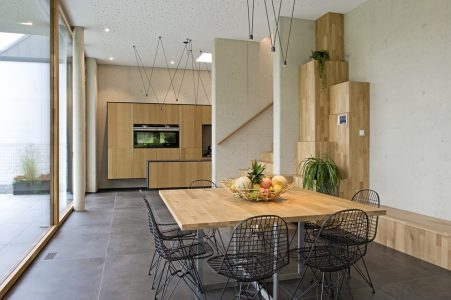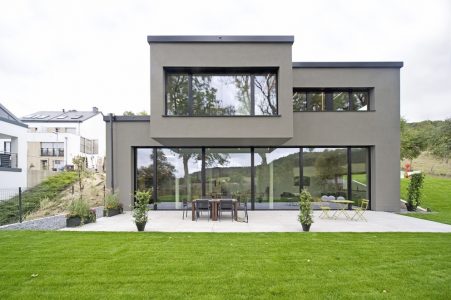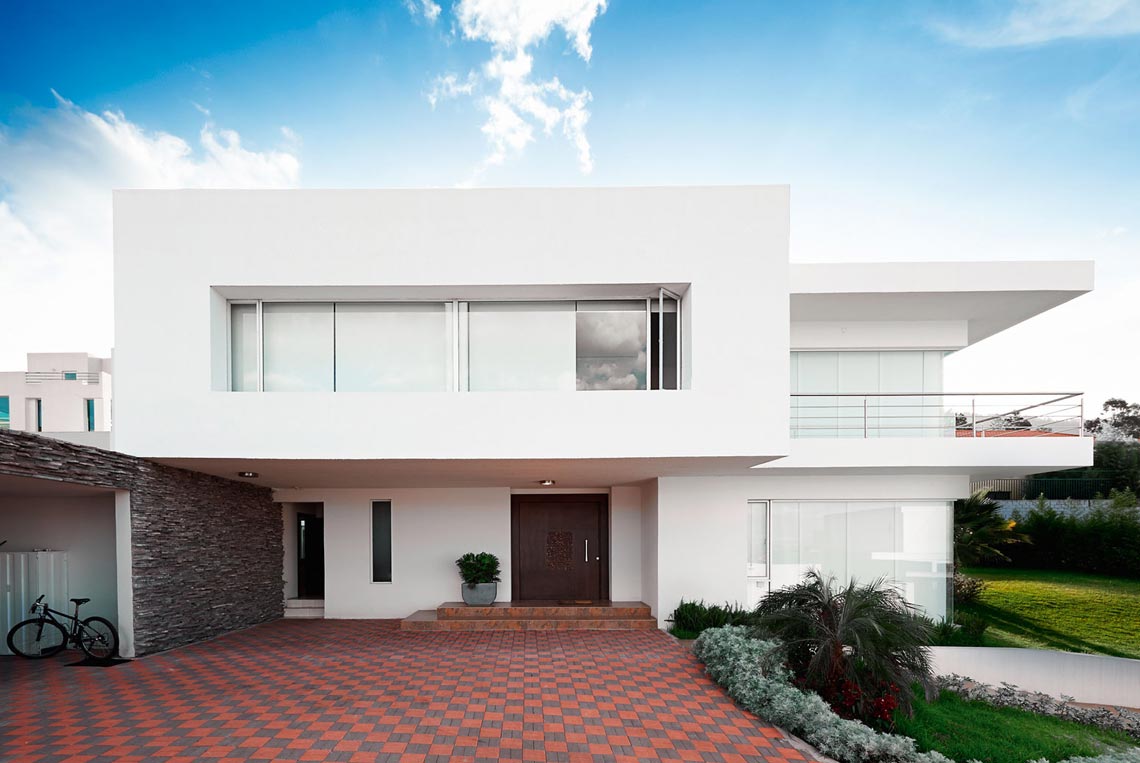Combining sustainability with energy efficiency – The hybrid passive house
Issue 02-2017:
read all articles online
read as pdf
The model home of the Luxembourg-based construction company, Arend & Fischbach, which was built under the “massive passive“ label, has a trailblazing design aimed at recycling management and demonstrates how cutting-edge technology can be combined with sustainable and energy-efficient living.
In designing the hybrid passive house, special attention was paid to minimizing the use of polystyrene and construction foam, instead working with sustainable materials such as wood products, foam glass and hemp. With the aid of smart building systems from rms.lu, the house also adapts to new standards of comfort.

The usage of selfpowered wireless wall switches combines newest technology with sustainable energyefficient living.
Smart control
From smart lighting control and well thought-out blinds control to targeted, room-specific ventilation control, the house is built around the 60 actuators and 40 sensors that cover all areas of everyday life. Depending on the field of application, these devices are controlled from a tablet or smart phone, automated by sensors or via self-powered wireless switches. The cables in the house are laid in a star configuration. As a result, all light groups are wired to the switch box separately, which makes it possible to use potential-free power cables and thus reduce the electromagnetic load, among other things. The equipment is controlled centrally by a fanless industrial PC, which performs its work noiselessly in the switch box.
Comfort and energy efficiency
However, one of the main innovations of the building systems installed here is the smart ventilation control system. Using nine steplessly controllable dampers, it divides the house into four different ventilation zones, which are individually monitored with CO2 and moisture sensors. For example, if the CO2 concentration in one of the bedrooms exceeds a certain limit value, this room alone is additionally ventilated. This approach saves electricity, since the ventilation system does not have to supply the entire house with additional fresh air, which also minimizes energy losses during heat recovery. The power of the ventilation system itself can, in turn, be steplessly controlled using an EnOcean module.
The energy harvesting EnOcean technology has also proven to be successful as a basis for controlling the blinds. Thus, rooms can be controlled manually, according to sunrise and sundown as well as according to a predefined plan. In excessively high winds, all blinds are raised automatically to avoid possible damage.

Clever combination: Besides sustainable materials, innovative and energy-efficient automation solutions have been implemented.
Reliable monitoring around the clock
Monitoring also played a key role in this project. For example, an EnOcean sensor is used to monitor water consumption. Power consumption is measured via a MODBus interface. These functions offer residents several benefits, such as the ability to estimate utility expenses or to monitor the property in their absence. It was thus possible to automate an entire house at a manageable financial cost in order to provide future residents with a comfortable and energy-efficient home.
New articles in Smart Home
Top articles




